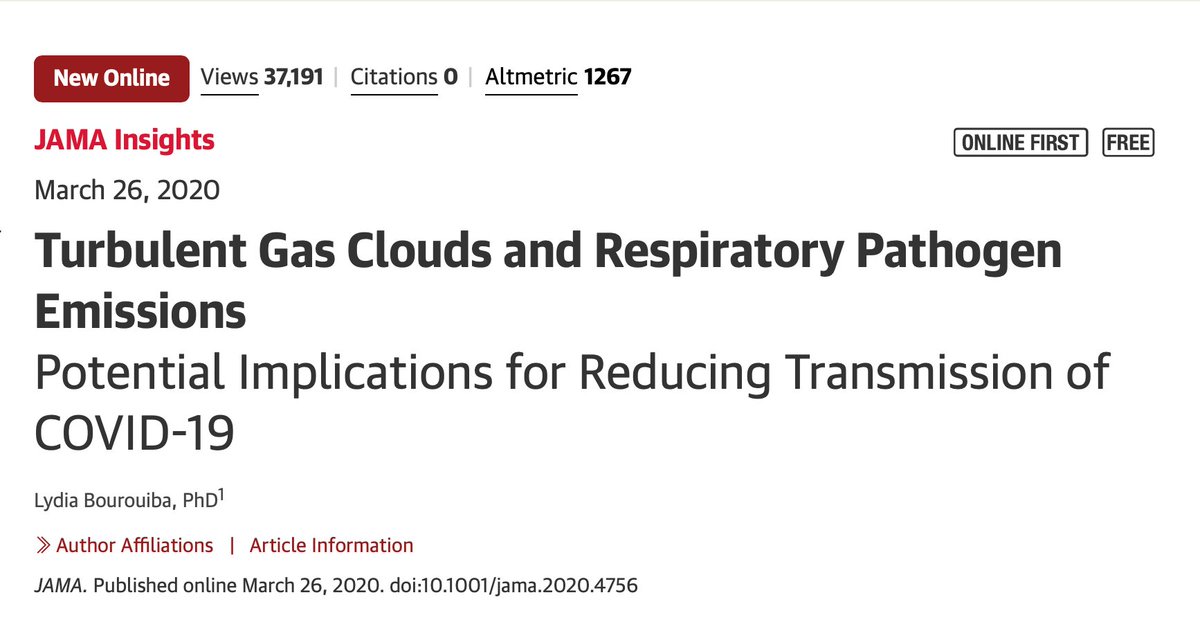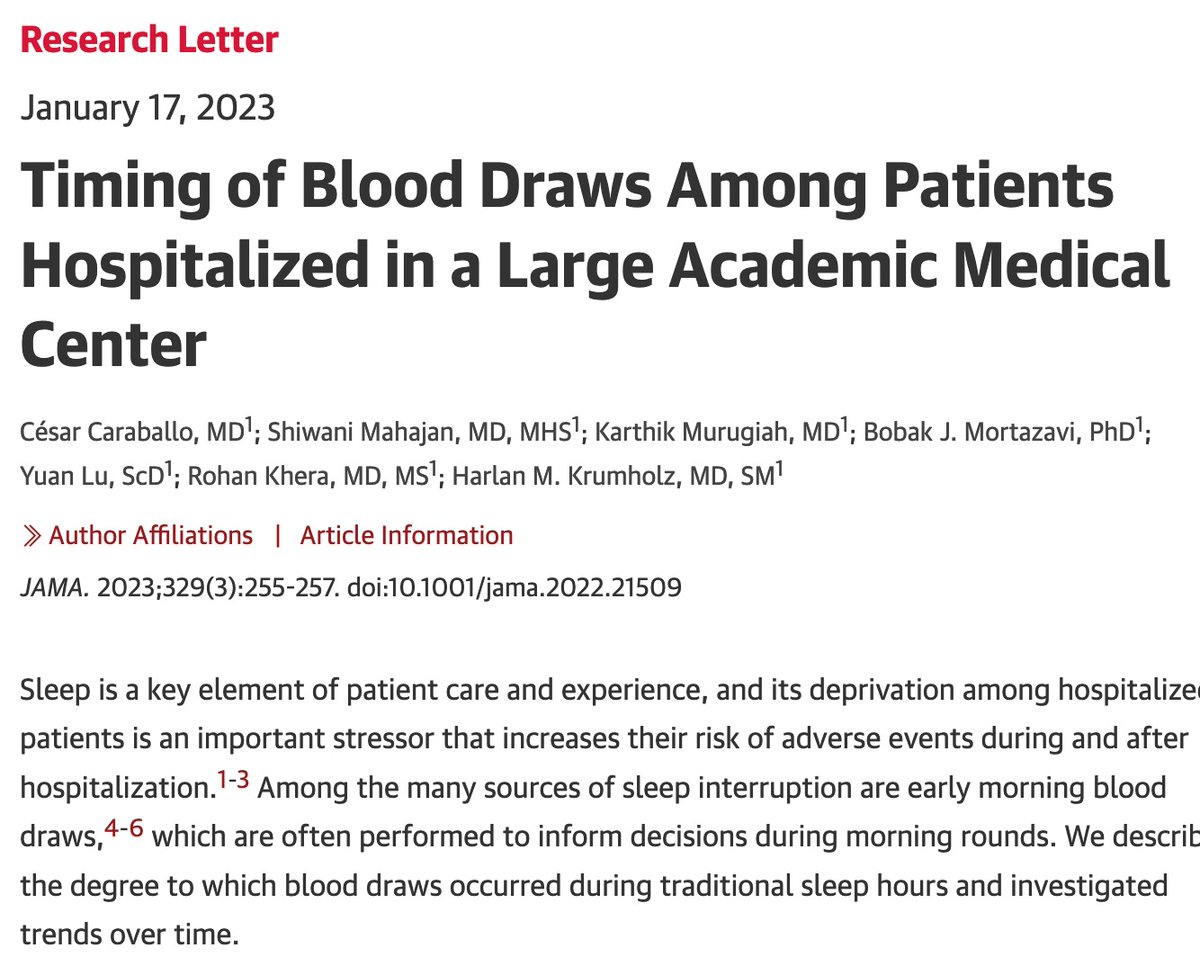Another case for universal PPE in hospital: "recommendations for separations of 3-6' may underestimate distance, timescale, & persistence over which the [respiratory] cloud and its pathogenic payload travel…' jamanetwork.com/journals/jama/… @JAMA_current #COVID19 #PPENow 

@JAMA_current Also...'A 2020 report from China demonstrated that severe acute respiratory syndrome coronavirus 2 (SARS-CoV-2) virus particles could be found in the ventilation systems in hospital rooms of patients with COVID-19’ [Are we checking for this?]
@JAMA_current 'For these and other reasons, wearing of appropriate personal protection equipment is vitally important for health care workers caring for patients who may be infected, even if they are farther than 6 feet away from a patient.’ [yes, I agree… until proven otherwise]
@JAMA_current Another uncomfortable point of this article is that we need more information on the efficacy of the masks we are using, including the N95. 'Currently used surgical and N95 masks are not tested for these potential characteristics of respiratory emissions.’ Rapid research needed.
• • •
Missing some Tweet in this thread? You can try to
force a refresh
















